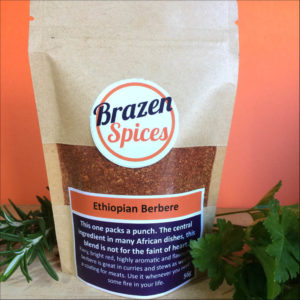Doro Wat — Ethiopian Chicken Stew
Doro wat is the national dish of Ethiopia, possibly the most famous meal from the African continent. And it’s hot. Super hot. Bonkers insane hot. Like, how do Ethiopian people still have functioning taste-buds hot. Western interpretations of this meal tend to tone things down a lot, but this recipe still has a lot of … warmth.
If you’re hesitant about the heat of this dish, cook it with half the spice first time round. You can always up the spice next time.
Doro wat is usually eaten with a flat bread called injera which is used to scoop up the stew instead of using utensils. You might be able to find injera at a local supermarket or make your own. (At a push you could substitute a different variety of flat bread, such as roti, or grab a spoon!)
This is a reasonably fast stove-top version of the dish, but doro wat is traditionally slow-cooked. You could definitely try this one in the slow-cooker.
You could also substitute beef for the chicken.
Ingredients
10 onions, finely chopped (Yes, you read that right! Put onions in the fridge to reduce their fumes when cutting, or blend them in a food processor.)
1 large chicken, in pieces
100ml white vinegar
Juice of one lemon
100ml olive oil
3 tablespoons of ghee
6 tablespoons of Brazen Ethiopian Berbere (or start tame and reduce)
10 hard boiled eggs, peeled.
Method
Place the chopped or minced onion in a heavy pan or casserole dish and cook for around 1 hour over a medium to low heat. Don’t add any liquid to the onion. The idea is to let the onion cook in its own juice and reduce by around half.
While the onion is cooking, combine the chicken with the vinegar and lemon juice and allow to marinate.
When the onion is cooked, add the chicken and its juices, the oil, the ghee and the spice and mix well. Bring to the boil, then allow to simmer. Cook until the chicken is cooked through.
Peel and make incisions in the eggs to allow the juices to seep in, then add to the dish and cook for another 10 minutes.
Serve with injera bread or rice.


